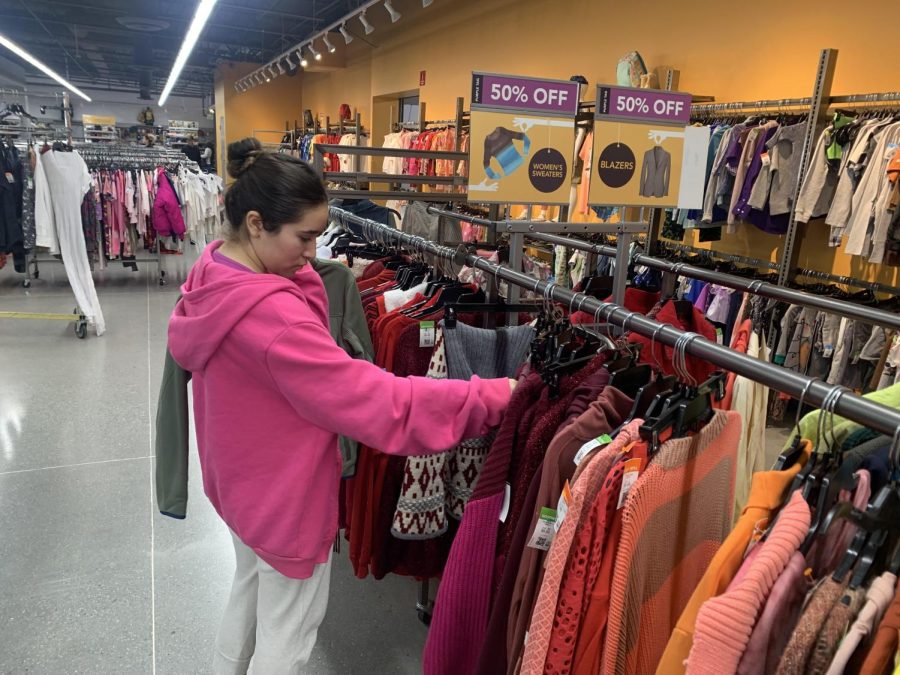Something old, something used, but to me it’s all new
Image courtesy of Angie Martinez
Avid thrifter Samantha Martinez browses through the clothing racks at Goodwill.
March 29, 2023
Once seen as a negative stigma towards people of low-income backgrounds but has recently become one of the biggest recent trends, thrifting has had a major reputation transformation in the past few years. More Americans are opting for thrifted clothes and appliances, gaining the resale industry an annual revenue of $17.5 billion, according to the United States Census Bureau.
It’s difficult to pinpoint the exact origin of thrifting because, in one form or another, we have always been doing it. Whether it’s donating our things to help those in need or selling something we don’t use anymore for some extra cash, finding someone who could make use of our old items isn’t exactly a new concept.
Following the environmental movement of the 21st century, this generation has taken it upon themselves to combat issues that negatively affect our planet. One of these contributors includes the popularity of fast fashion. According to the Green Business Bureau, fast fashion is responsible for roughly 10% of the annual global carbon emission and creates around 92 million tons of textile waste every year.
Attention to this issue was brought up with the trend of clothing hauls, in which influencers would showcase a large amount of clothing, usually bought from companies with poor environmental practices such as Shein and Zara. Once awareness of the impact of fast fashion was made more apparent, the alternative of thrifting arose. Now consumers can shop for clothing and appliances while simultaneously contributing to lessening their carbon footprint.
As more people are dressing in thrifted clothing, the demand for quality, fashionable vintage pieces rose. Naturally following this rise in demand, a rise in prices came into action. Segerstrom student Wendy Herrada (12) has been thrifting far before its rise in popularity and argues that the current rise in price in thrift stores is “unfair.”
“Thrift stores’ main purpose is to help those who are unable to afford much.”
By trying to capitalize on the popularity of thrift stores, most second-hand businesses are backtracking on their prior mission of supplying essentials at a low price to help the less fortunate.
While bringing more focus to the issue of fast fashion, the popularity of thrifting has also introduced individuals to its marvelous subcultures and community. More experienced thrifters usually grow to become active vintage hunters and make it a hobby to build their collections. Kristine Houston, the owner of Elsewhere Vintage and Joyride in Old Towne Orange, mentions that the thrill of looking for a piece is what seasoned customers’ admire about the hobby and that “vintage lovers take great pride in their finds.” The uniqueness of vintage and thrifted clothing allows shoppers to explore and express themselves in ways that modern clothing can not.
If you ask any thrifter if they recommend exploring secondhand clothing they will likely welcome you to the community with open arms. However, in order to experience the full joy of thrifting, there are some things to take into consideration.
“One thing needed for first-time buyers is time,” says Herrada. “It will not be easy to find what you need; you might have to look through piles or through all rows of clothing. It’ll take a while and might be a bit tiring, but it’s always worth it.”


Melanie • Dec 21, 2023 at 9:05 am
I really liked your article because it shows what it is like to thrift, I personally really like to thrift too I get a lot of my clothes from thrift stores.